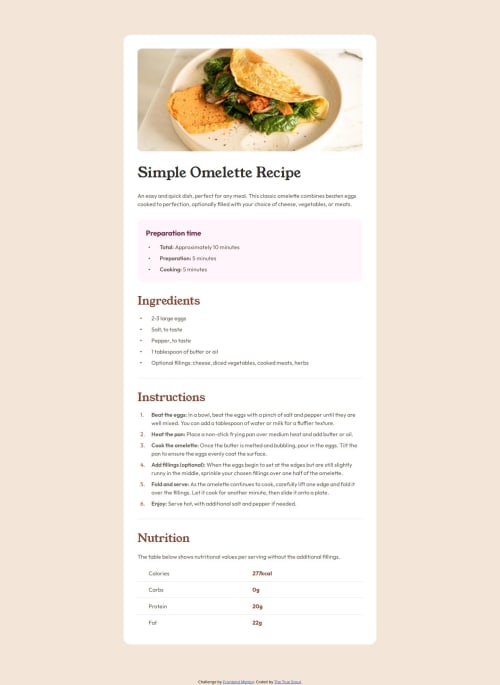Frontend Mentor challenge 4: Recipe Page.

Solution retrospective
I implemented some of the advice given to me on my last few challeges, and i would like to know if i did better this time :).
What specific areas of your project would you like help with?-
The list elements. I took a very round about way to fix two things- one of them being changing the width of the bullet points. I used
li:marker { width: 0.3rem; }but it did not change the size. the second thing was the space between theliand the text. For both theoland theul, I used the pseudo element::beforeto make that space(and changing the size of the bullets), but it got much more complicated with theoland the code got longer than I'd have wanted it to. If there's a better way to fix these, please tell me. -
Is there a way to increase space between
lielements without turningulorolinto flex elements? I don't thinkgap:works without flex( I could be mistaken.)
Please log in to post a comment
Log in with GitHubCommunity feedback
No feedback yet. Be the first to give feedback on TheTrueScout's solution.
Join our Discord community
Join thousands of Frontend Mentor community members taking the challenges, sharing resources, helping each other, and chatting about all things front-end!
Join our Discord